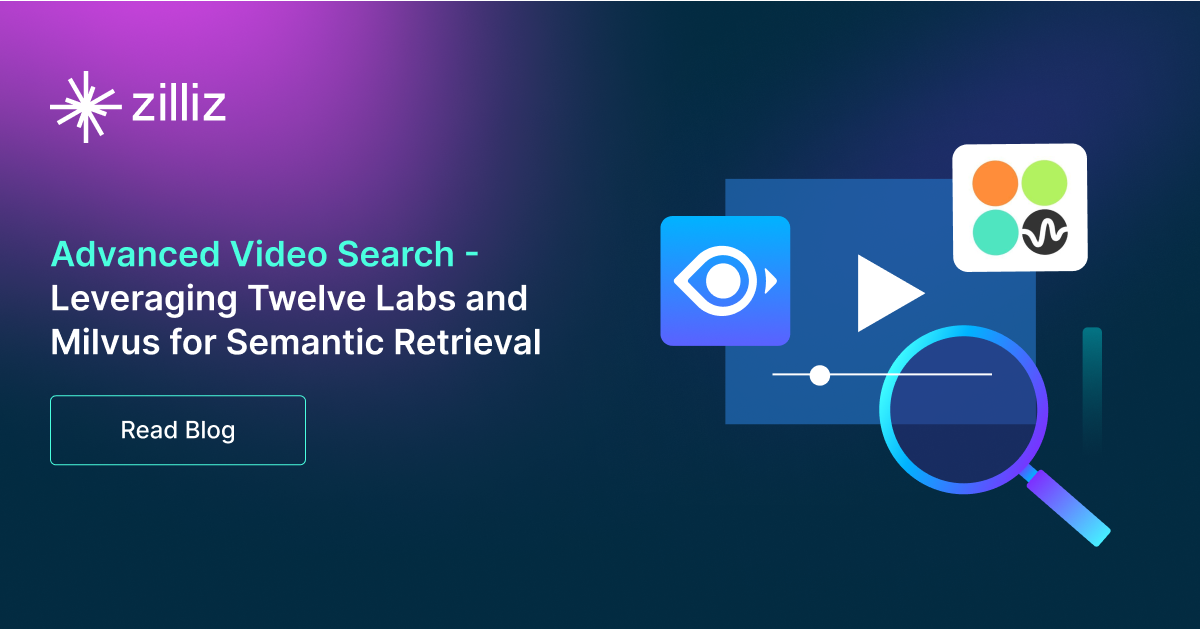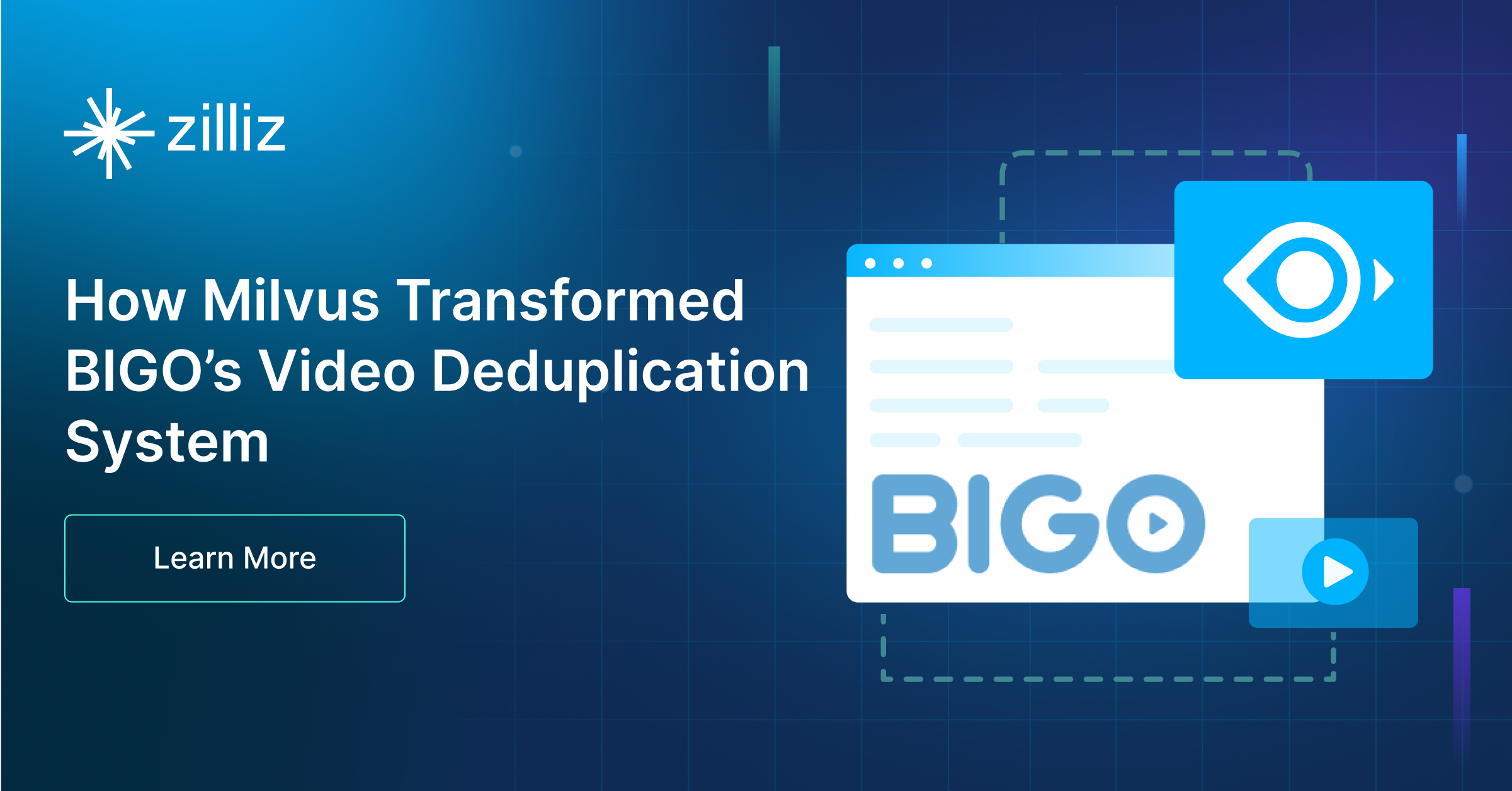Build RAG Chatbot with LangChain, Milvus, Mistral AI Mistral Nemo, and nomic-embed-text-v1.5
Introduction to RAG
Retrieval-Augmented Generation (RAG) is a game-changer for GenAI applications, especially in conversational AI. It combines the power of pre-trained large language models (LLMs) like OpenAI’s GPT with external knowledge sources stored in vector databases such as Milvus and Zilliz Cloud, allowing for more accurate, contextually relevant, and up-to-date response generation. A RAG pipeline usually consists of four basic components: a vector database, an embedding model, an LLM, and a framework.
Key Components We'll Use for This RAG Chatbot
This tutorial shows you how to build a simple RAG chatbot in Python using the following components:
- LangChain: An open-source framework that helps you orchestrate the interaction between LLMs, vector stores, embedding models, etc, making it easier to integrate a RAG pipeline.
- Milvus: An open-source vector database optimized to store, index, and search large-scale vector embeddings efficiently, perfect for use cases like RAG, semantic search, and recommender systems. If you hate to manage your own infrastructure, we recommend using Zilliz Cloud, which is a fully managed vector database service built on Milvus and offers a free tier supporting up to 1 million vectors.
- Mistral AI Mistral Nemo: This model is designed for high-performance natural language processing, emphasizing interpretability and adaptability. It excels in tasks involving text generation, dialogue systems, and content creation. Ideal for industries like marketing and entertainment, Mistral Nemo delivers rich, coherent narratives while allowing for fine-tuning to specific domain requirements.
- nomic-embed-text-v1.5: This model specializes in generating high-quality text embeddings that capture semantic meaning and contextual nuances. Its strength lies in facilitating efficient similarity search and information retrieval tasks. Ideal for applications in recommendation systems, semantic search, and natural language understanding, it enhances performance in various NLP projects.
By the end of this tutorial, you’ll have a functional chatbot capable of answering questions based on a custom knowledge base.
Note: Since we may use proprietary models in our tutorials, make sure you have the required API key beforehand.
Step 1: Install and Set Up LangChain
%pip install --quiet --upgrade langchain-text-splitters langchain-community langgraph
Step 2: Install and Set Up Mistral AI Mistral Nemo
pip install -qU "langchain[mistralai]"
import getpass
import os
if not os.environ.get("MISTRAL_API_KEY"):
os.environ["MISTRAL_API_KEY"] = getpass.getpass("Enter API key for Mistral AI: ")
from langchain.chat_models import init_chat_model
llm = init_chat_model("open-mistral-nemo", model_provider="mistralai")
Step 3: Install and Set Up nomic-embed-text-v1.5
pip install -qU langchain-nomic
import getpass
import os
if not os.environ.get("NOMIC_API_KEY"):
os.environ["NOMIC_API_KEY"] = getpass.getpass("Enter API key for Nomic: ")
from langchain_nomic import NomicEmbeddings
embeddings = NomicEmbeddings(model="nomic-embed-text-v1.5")
Step 4: Install and Set Up Milvus
pip install -qU langchain-milvus
from langchain_milvus import Milvus
vector_store = Milvus(embedding_function=embeddings)
Step 5: Build a RAG Chatbot
Now that you’ve set up all components, let’s start to build a simple chatbot. We’ll use the Milvus introduction doc as a private knowledge base. You can replace it with your own dataset to customize your RAG chatbot.
import bs4
from langchain import hub
from langchain_community.document_loaders import WebBaseLoader
from langchain_core.documents import Document
from langchain_text_splitters import RecursiveCharacterTextSplitter
from langgraph.graph import START, StateGraph
from typing_extensions import List, TypedDict
# Load and chunk contents of the blog
loader = WebBaseLoader(
web_paths=("https://milvus.io/docs/overview.md",),
bs_kwargs=dict(
parse_only=bs4.SoupStrainer(
class_=("doc-style doc-post-content")
)
),
)
docs = loader.load()
text_splitter = RecursiveCharacterTextSplitter(chunk_size=1000, chunk_overlap=200)
all_splits = text_splitter.split_documents(docs)
# Index chunks
_ = vector_store.add_documents(documents=all_splits)
# Define prompt for question-answering
prompt = hub.pull("rlm/rag-prompt")
# Define state for application
class State(TypedDict):
question: str
context: List[Document]
answer: str
# Define application steps
def retrieve(state: State):
retrieved_docs = vector_store.similarity_search(state["question"])
return {"context": retrieved_docs}
def generate(state: State):
docs_content = "\n\n".join(doc.page_content for doc in state["context"])
messages = prompt.invoke({"question": state["question"], "context": docs_content})
response = llm.invoke(messages)
return {"answer": response.content}
# Compile application and test
graph_builder = StateGraph(State).add_sequence([retrieve, generate])
graph_builder.add_edge(START, "retrieve")
graph = graph_builder.compile()
Test the Chatbot
Yeah! You've built your own chatbot. Let's ask the chatbot a question.
response = graph.invoke({"question": "What data types does Milvus support?"})
print(response["answer"])
Example Output
Milvus supports various data types including sparse vectors, binary vectors, JSON, and arrays. Additionally, it handles common numerical and character types, making it versatile for different data modeling needs. This allows users to manage unstructured or multi-modal data efficiently.
Optimization Tips
As you build your RAG system, optimization is key to ensuring peak performance and efficiency. While setting up the components is an essential first step, fine-tuning each one will help you create a solution that works even better and scales seamlessly. In this section, we’ll share some practical tips for optimizing all these components, giving you the edge to build smarter, faster, and more responsive RAG applications.
LangChain optimization tips
To optimize LangChain, focus on minimizing redundant operations in your workflow by structuring your chains and agents efficiently. Use caching to avoid repeated computations, speeding up your system, and experiment with modular design to ensure that components like models or databases can be easily swapped out. This will provide both flexibility and efficiency, allowing you to quickly scale your system without unnecessary delays or complications.
Milvus optimization tips
Milvus serves as a highly efficient vector database, critical for retrieval tasks in a RAG system. To optimize its performance, ensure that indexes are properly built to balance speed and accuracy; consider utilizing HNSW (Hierarchical Navigable Small World) for efficient nearest neighbor search where response time is crucial. Partitioning data based on usage patterns can enhance query performance and reduce load times, enabling better scalability. Regularly monitor and adjust cache settings based on query frequency to avoid latency during data retrieval. Employ batch processing for vector insertions, which can minimize database lock contention and enhance overall throughput. Additionally, fine-tune the model parameters by experimenting with the dimensionality of the vectors; higher dimensions can improve retrieval accuracy but may increase search time, necessitating a balance tailored to your specific use case and hardware infrastructure.
Mistral AI Mistral Nemo optimization tips
Mistral Nemo is designed for domain-specific knowledge retrieval and response generation, making retrieval efficiency a top priority. Optimize performance by fine-tuning retrieval pipelines to ensure domain-relevant embeddings are used for similarity searches. Use a ranking layer to prioritize the most contextually relevant passages before passing them to the model, reducing token waste. Adjust temperature settings (0.1–0.3) to maintain consistent, structured responses. In latency-sensitive applications, use token streaming to provide incremental responses rather than waiting for full completion. If running Nemo in a production environment, consider distributed inference techniques to manage large-scale workloads effectively. Monitor retrieval accuracy continuously and fine-tune embeddings periodically to keep responses aligned with domain-specific updates.
nomic-embed-text-v1.5 optimization tips
nomic-embed-text-v1.5 is a well-rounded embedding model that performs effectively in diverse text retrieval scenarios. Optimize text preprocessing by removing stop words and redundant information before embedding to improve storage efficiency. Use hierarchical indexing structures to manage embeddings in large-scale datasets, improving retrieval speed. Leverage cosine similarity filtering to refine search results post-query. For cost-effective scaling, batch embed multiple documents at once and store embeddings in a distributed vector database like Milvus or FAISS. If dealing with rapidly changing data, implement incremental indexing rather than full reprocessing to save computation time. Regularly monitor embedding quality by validating against a benchmarked dataset to ensure relevance.
By implementing these tips across your components, you'll be able to enhance the performance and functionality of your RAG system, ensuring it’s optimized for both speed and accuracy. Keep testing, iterating, and refining your setup to stay ahead in the ever-evolving world of AI development.
RAG Cost Calculator: A Free Tool to Calculate Your Cost in Seconds
Estimating the cost of a Retrieval-Augmented Generation (RAG) pipeline involves analyzing expenses across vector storage, compute resources, and API usage. Key cost drivers include vector database queries, embedding generation, and LLM inference.
RAG Cost Calculator is a free tool that quickly estimates the cost of building a RAG pipeline, including chunking, embedding, vector storage/search, and LLM generation. It also helps you identify cost-saving opportunities and achieve up to 10x cost reduction on vector databases with the serverless option.
 Calculate your RAG cost
Calculate your RAG cost
What Have You Learned?
What have you learned? Wow, what an incredible journey we've just taken together into the world of cutting-edge retrieval-augmented generation (RAG) systems! By integrating LangChain as our framework, we’ve seen how it elegantly orchestrates the entire process, tying all the components into a seamless workflow that empowers your applications. The Milvus vector database has truly been a game changer, facilitating rapid, efficient searches that bring your data to life in a matter of seconds. That capability is a major step forward for any application requiring quick access to complex information.
Next, we explored the conversational intelligence brought forth by the Mistral AI LLM, which not only understands context and nuance but also engages users as if they are having a natural conversation. This is where the magic happens! And let’s not forget about the embedding model—nomic-embed-text-v1.5—which provides rich semantic representations of your text that enhance every interaction and make your RAG system more intuitive and responsive.
Along the way, we shared optimization tips to ensure you're getting the most out of these tools, along with a handy cost calculator to help you strategize as you scale. Now, the real fun begins! Go out there, take these insights, and start building, optimizing, and innovating your own RAG applications. The possibilities are endless, and your journey is just getting started. Remember, the future is in your hands! Happy coding!
Further Resources
🌟 In addition to this RAG tutorial, unleash your full potential with these incredible resources to level up your RAG skills.
- How to Build a Multimodal RAG | Documentation
- How to Enhance the Performance of Your RAG Pipeline
- Graph RAG with Milvus | Documentation
- How to Evaluate RAG Applications - Zilliz Learn
- Generative AI Resource Hub | Zilliz
We'd Love to Hear What You Think!
We’d love to hear your thoughts! 🌟 Leave your questions or comments below or join our vibrant Milvus Discord community to share your experiences, ask questions, or connect with thousands of AI enthusiasts. Your journey matters to us!
If you like this tutorial, show your support by giving our Milvus GitHub repo a star ⭐—it means the world to us and inspires us to keep creating! 💖
- Introduction to RAG
- Key Components We'll Use for This RAG Chatbot
- Step 1: Install and Set Up LangChain
- Step 2: Install and Set Up Mistral AI Mistral Nemo
- Step 3: Install and Set Up nomic-embed-text-v1.5
- Step 4: Install and Set Up Milvus
- Step 5: Build a RAG Chatbot
- Optimization Tips
- RAG Cost Calculator: A Free Tool to Calculate Your Cost in Seconds
- What Have You Learned?
- Further Resources
- We'd Love to Hear What You Think!
Content
Vector Database at Scale
Zilliz Cloud is a fully-managed vector database built for scale, perfect for your RAG apps.
Try Zilliz Cloud for Free


